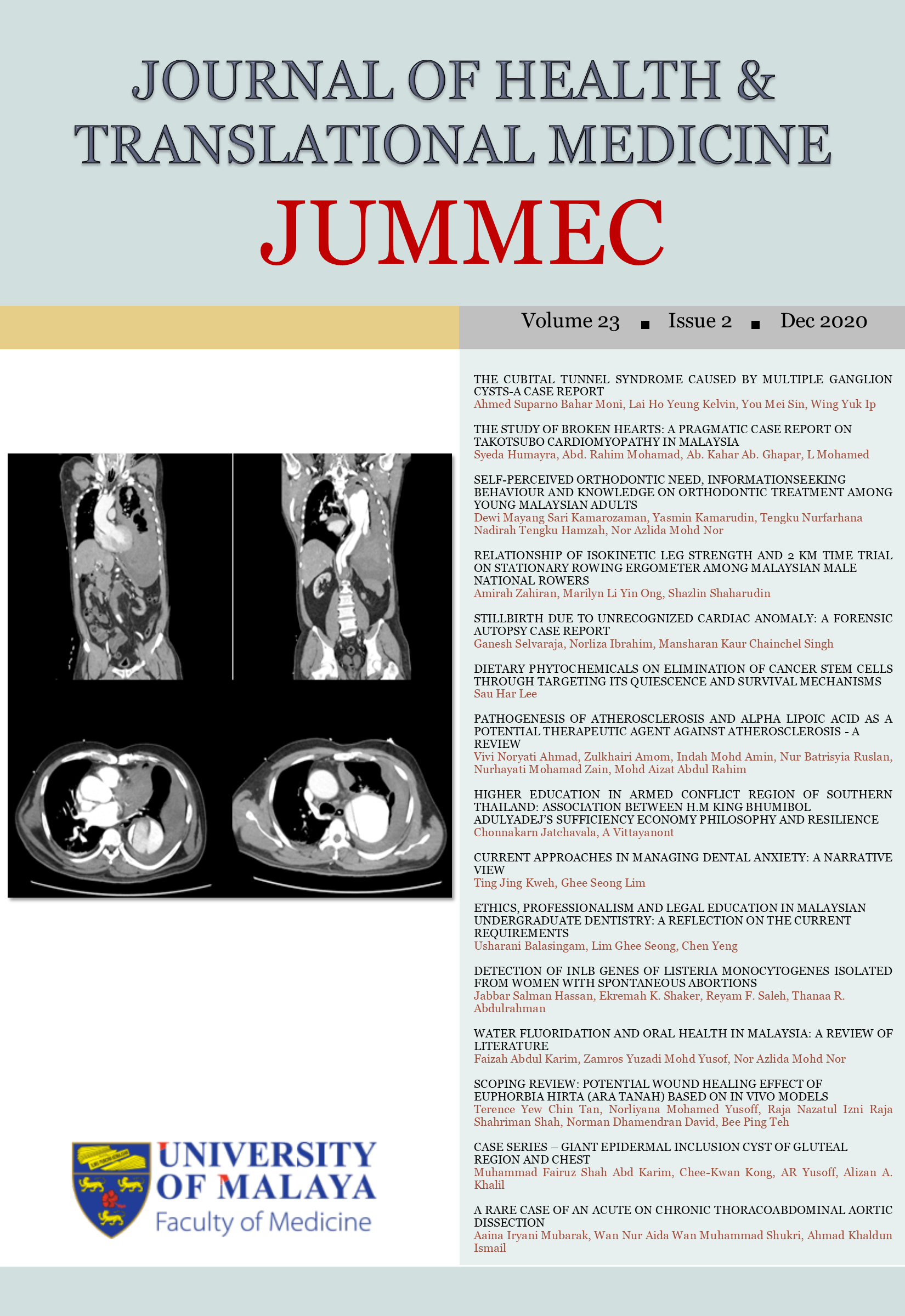RELATIONSHIP OF ISOKINETIC LEG STRENGTH AND 2 KM TIME TRIAL ON STATIONARY ROWING ERGOMETER AMONG MALAYSIAN MALE NATIONAL ROWERS
Received 2019-10-29; Accepted 2020-04-29; Published 2020-08-07
DOI:
https://doi.org/10.22452/jummec.vol23no2.4Keywords:
Hip, Knee, Muscular Strength, PerformanceAbstract
Background: Strength of leg musculature is crucial to generate propulsive force during rowing. The purpose of this study was to determine the relationship of isokinetic dominant leg strength and 2 km time trial on stationary rowing ergometer among male national rowers.
Methods: Seventeen male national rowers were recruited for the study. Their hip and knee isokinetic strength were determined in the sagittal plane at 60°/s angular velocity. The relationship between the hip and knee strength, and 2 km time trial performance were evaluated using Pearson correlation.
Results: The national rowers completed the 2 km time trial duration in 7.20±0.39 minutes. The hamstring to quadriceps ratio (H:Q) was significantly correlated to 2 km time trial performance (r=-0.491, p=0.045). No other significant relationships between hip and knee isokinetic strength and 2 km time trial performance were observed.
Conclusion: Increased isokinetic knee strength ratio (H:Q) may enhance 2 km time trial performance among male national rowers. Other isokinetic variables of hip and knee isokinetic strength were not significantly related to 2 km time trial.
Downloads
Downloads
Published
Issue
Section
License
All authors agree that the article, if editorially accepted for publication, shall be licensed under the Creative Commons Attribution License 4.0 to allow others to freely access, copy and use research provided the author is correctly attributed, unless otherwise stated. All articles are available online without charge or other barriers to access. However, anyone wishing to reproduce large quantities of an article (250+) should inform the publisher. Any opinion expressed in the articles are those of the authors and do not reflect that of the University of Malaya, 50603 Kuala Lumpur, Malaysia.


